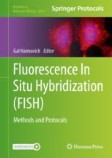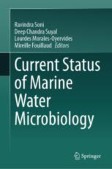Search
Search Results
-
Starvation decreases immunity and immune regulatory factor NF-κB in the starlet sea anemone Nematostella vectensis
Lack of proper nutrition has important consequences for the physiology of all organisms, and nutritional status can affect immunity, based on many...

-
Updated single cell reference atlas for the starlet anemone Nematostella vectensis
BackgroundThe recent combination of genomics and single cell transcriptomics has allowed to assess a variety of non-conventional model organisms in...

-
Fluorescence In Situ Hybridization as a Tool for Studying the Specification and Differentiation of Cell Types in Nematostella vectensis
The sea anemone Nematostella vectensis is a genetically tractable cnidarian species that has become a model organism for studying the evolution of...
-
Single-Cell Transcriptomic Analysis in the Regenerating Cnidarian Nematostella vectensis
Cnidarians have historically served as excellent laboratory models for regenerative development given their capacity to regrow large portions of the...
-
Nematostella vectensis exemplifies the exceptional expansion and diversity of opsins in the eyeless Hexacorallia
BackgroundOpsins are the primary proteins responsible for light detection in animals. Cnidarians (jellyfish, sea anemones, corals) have diverse...

-
Manipulation of Gene Activity in the Regenerative Model Sea Anemone, Nematostella vectensis
With a surprisingly complex genome and an ever-expanding genetic toolkit, the sea anemone Nematostella vectensisNematostella vectensis has become a...
-
A developmental role for the chromatin-regulating CoREST complex in the cnidarian Nematostella vectensis
BackgroundChromatin-modifying proteins are key players in the regulation of development and cell differentiation in animals. Most chromatin...

-
Creating a User-Friendly and Open-Access Gene Expression Database for Comparing Embryonic Development and Regeneration in Nematostella vectensis
The sea anemone Nematostella vectensis has emerged as a powerful research model to understand at the gene regulatory network level, to what extend...
-
Transcriptomic Analysis in the Sea Anemone Nematostella vectensis
The sea anemone Nematostella vectensis is an emerging research model to study embryonic development and regeneration at the molecular and global...
-
Experimental Tools to Study Regeneration in the Sea Anemone Nematostella vectensis
Animal regeneration is a biological process leading to the reformation of injured or lost tissues/body parts. One of the most fascinating...
-
Characterization of the dynamics and variability of neuronal subtype responses during growth, degrowth, and regeneration of Nematostella vectensis
BackgroundThe ability to regenerate body parts is a feature of metazoan organisms and the focus of intense research aiming to understand its basis. A...

-
Ectopic activation of GABAB receptors inhibits neurogenesis and metamorphosis in the cnidarian Nematostella vectensis
The metabotropic gamma-aminobutyric acid B receptor (GABA B R) is a G protein-coupled receptor that mediates neuronal inhibition by the...

-
Functional analysis in a model sea anemone reveals phylogenetic complexity and a role in cnidocyte discharge of DEG/ENaC ion channels
Ion channels of the DEG/ENaC family share a similar structure but serve strikingly diverse biological functions, such as Na + reabsorption,...

-
Reverse Genetic Approaches to Investigate the Neurobiology of the Cnidarian Sea Anemone Nematostella vectensis
The cnidarian sea anemone Nematostella vectensis has grown in popularity as a model system to complement the ongoing work in traditional bilaterian...
-
Generating Transgenic Reporter Lines for Studying Nervous System Development in the Cnidarian Nematostella vectensis
Neurons often display complex morphologies with long and fine processes that can be difficult to visualize, in particular in living animals....
-
An ancestral Wnt–Brachyury feedback loop in axial patterning and recruitment of mesoderm-determining target genes
Transcription factors are crucial drivers of cellular differentiation during animal development and often share ancient evolutionary origins. The...

-
Characterization of nAChRs in Nematostella vectensis supports neuronal and non-neuronal roles in the cnidarian–bilaterian common ancestor
BackgroundNicotinic and muscarinic acetylcholine receptors likely evolved in the cnidarian–bilaterian common ancestor. Both receptor families are...

-
Bioinformatic Prohormone Discovery in Basal Metazoans: Insights from Trichoplax
Experimental discovery of neuropeptides and peptide hormones is a long and tedious task. Mining the genomic and transcriptomic sequence data with...
-
The CYP443C1 (CYP74 clan) Cytochrome of Sea Anemone Nematostella vectensis–the First Metazoan Enzyme Possessing Hydroperoxide Lyase/Epoxyalcohol Synthase Activity
AbstractA novel CYP74 clan gene CYP443С1 of the starlet sea anemone ( Nematostella vectensis , Cnidaria) has been cloned, and the properties of the...

-
Microbial Symbiosis in Marine Ecosystem
Symbioses between eukaryotic hosts and microorganisms are significant at all scales, from the individual organism to the entire ecosystem, and they...
